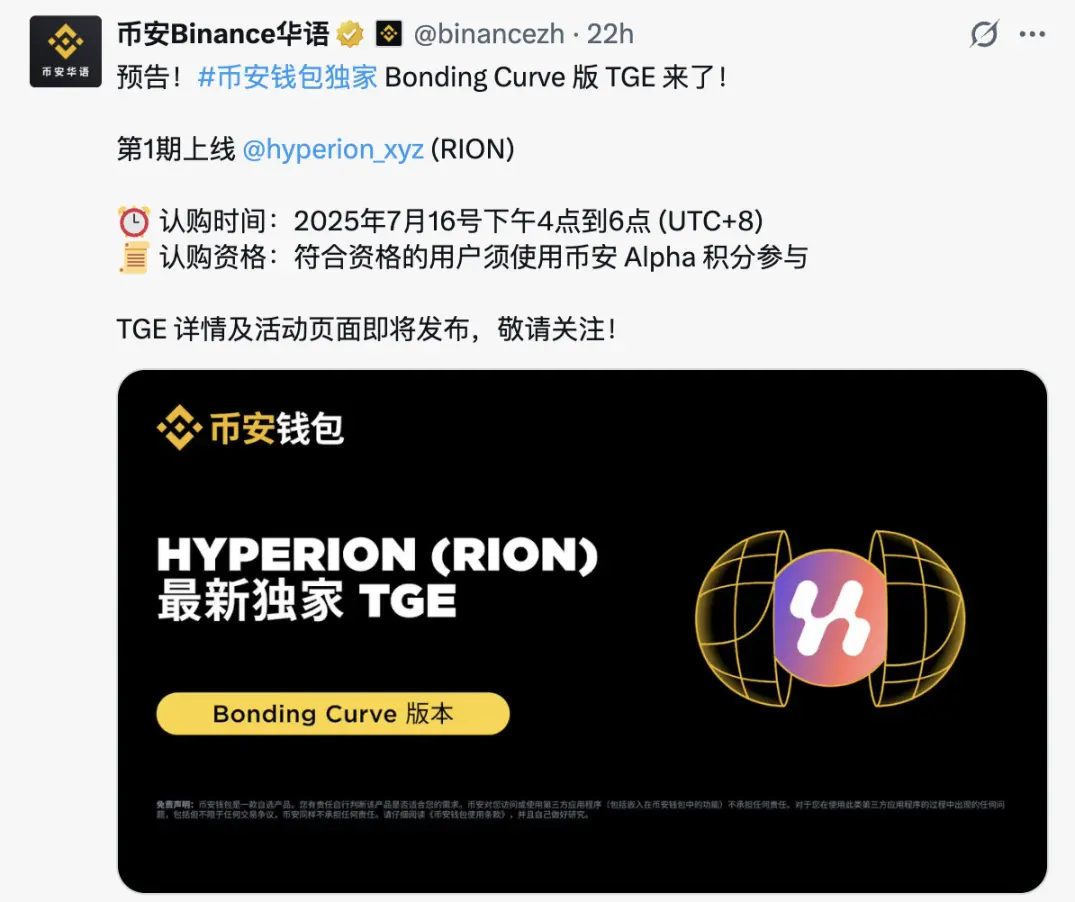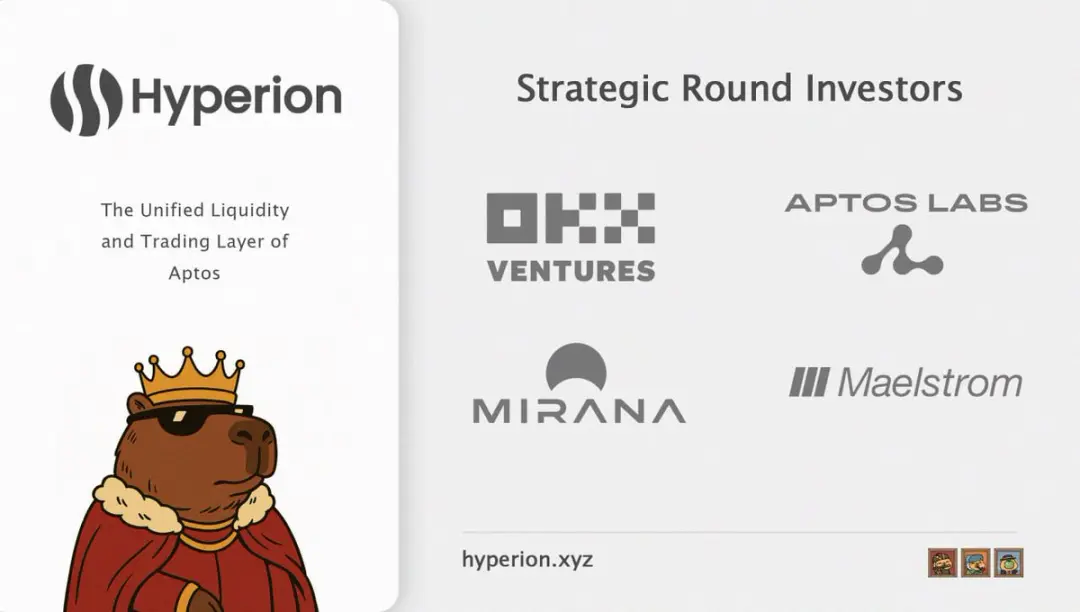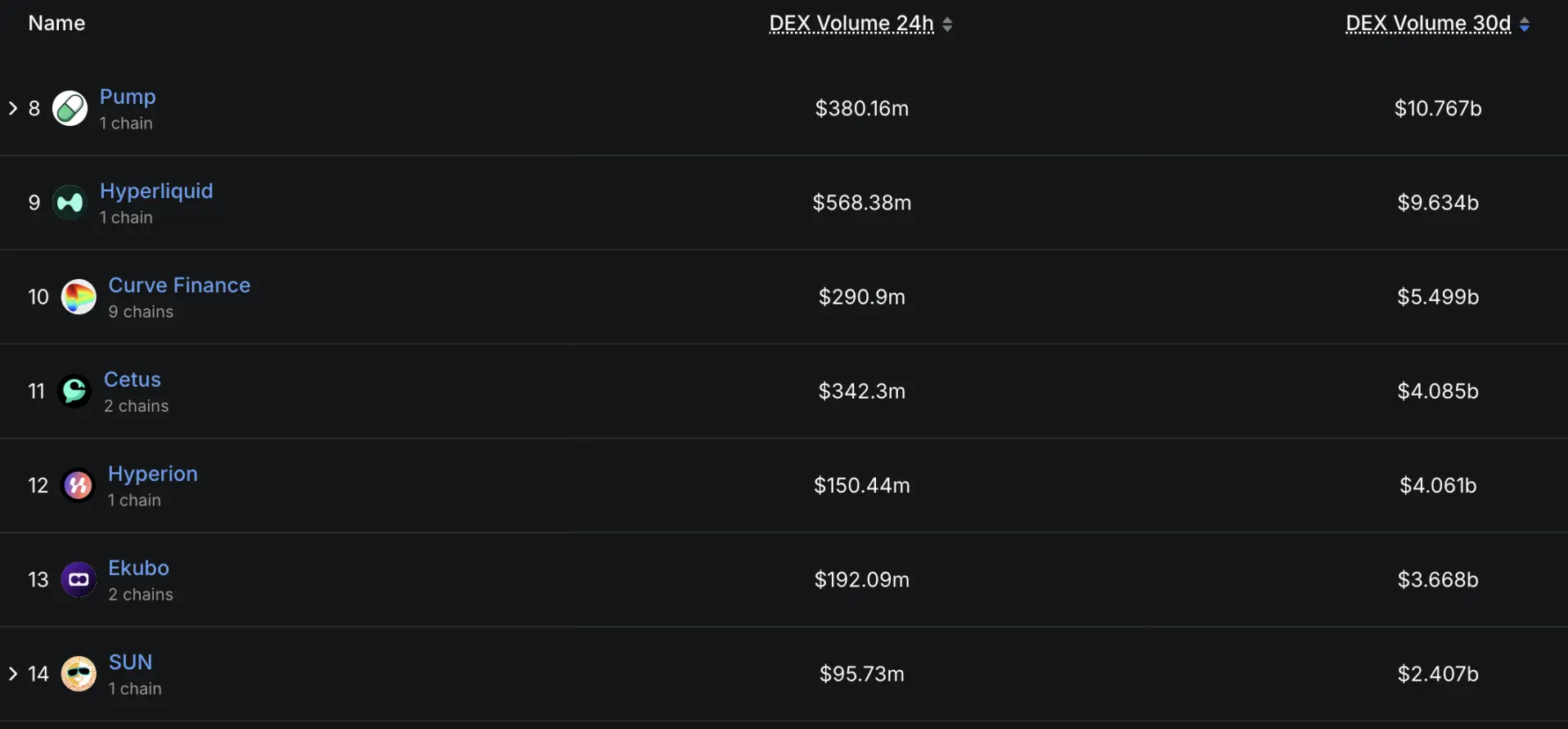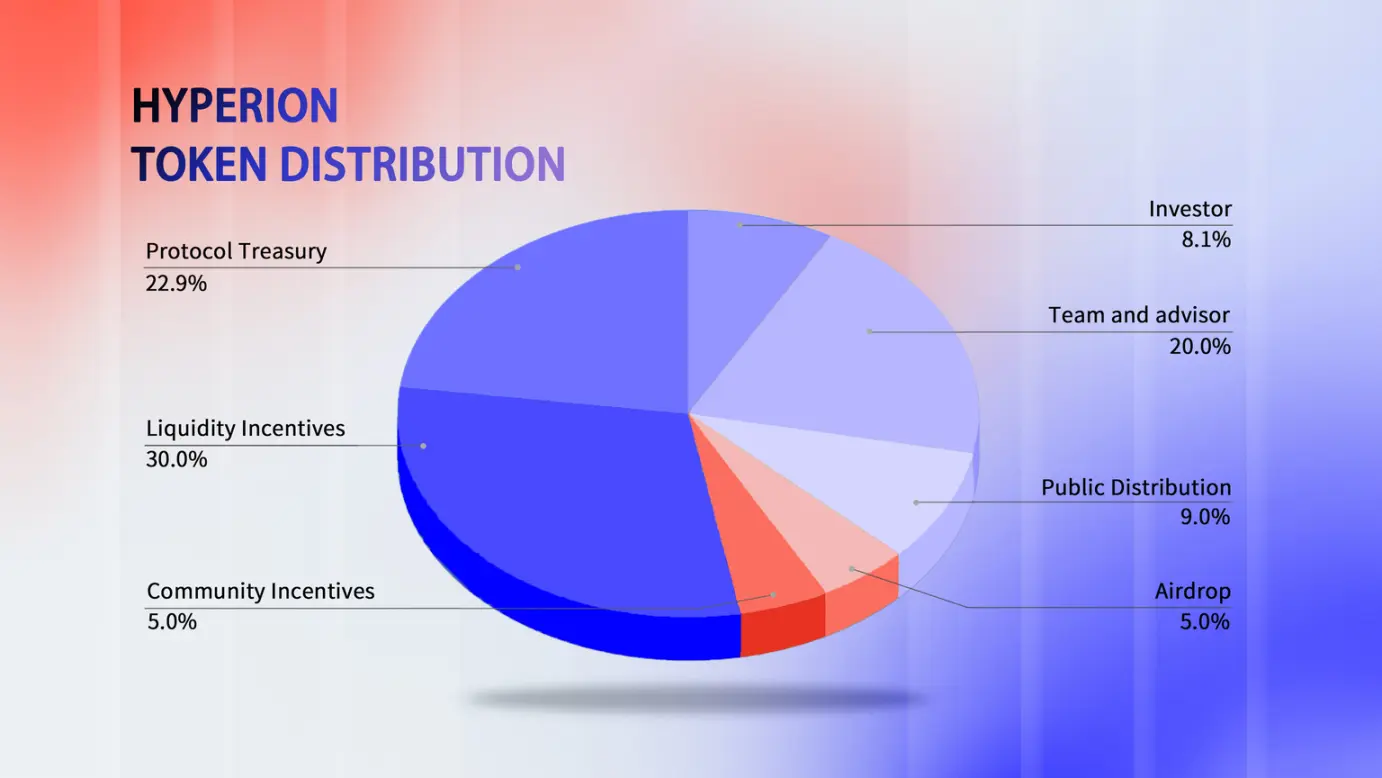Author: Alex Liu, Foresight News
On July 16 at 16:00, Binance Wallet will hold the first Bonding-Curve version TGE, launching the native token RION of the Aptos ecosystem DEX project Hyperion. This event requires eligible users to use Binance Alpha points to participate in the subscription, providing dynamic pricing and liquidity for RION through the 'Bonding-Curve' algorithm.

Taking this opportunity, we will comprehensively sort out Hyperion's project positioning, technical features, financing history, data metrics, token economics, airdrop plans, etc., while introducing other popular projects in the Aptos ecosystem and overall activity levels.
Protocol Features: Hybrid Order Book + AMM + Aggregation
Hyperion is a hybrid decentralized exchange (DEX) natively deployed on the Aptos chain, integrating both order book matching and advanced automated market-making mechanisms. The core design is based on a concentrated liquidity model (similar to Uniswap V3), allowing liquidity providers to deploy capital within specified price ranges to enhance capital efficiency.
Hyperion also features a Directional Liquidity Market Maker (DLMM) mechanism that dynamically adjusts the capital distribution within the x+y=k curve, enabling zero slippage trading for high volatility assets. This allows Hyperion to efficiently meet the trading needs of long-tail assets while serving stablecoin pairs, making it the first DEX on Aptos to satisfy this scenario.
In June 2025, Hyperion will launch aggregation routing functionality, shifting its positioning from a single DEX to an all-chain liquidity hub. This feature will intelligently split trading paths, aggregating liquidity from all DEXs on Aptos to provide users with the best price and lowest slippage.

Hyperion's official documentation states that its 'fully on-chain hybrid order book - AMM DEX' natively utilizes the Aptos parallel execution engine, balancing the needs of professional traders and retail investors. Additionally, Hyperion is developing limit order functionality and features a yield vault, Drips incentives, forming a complete trading infrastructure layer.
Financing Situation: Institutions like OKX and Maelstrom Getting Involved
Hyperion quickly gained support from multiple institutions shortly after its inception. In April of this year, Hyperion completed a round of strategic financing led by OKX Ventures, with follow-on investment from Aptos Labs (the supporting team of Aptos founders). Subsequently, other capital participants included Maelstrom (the family office of BitMEX founder Arthur Hayes), Mirana Ventures, etc., although specific amounts were not disclosed.

Project Data: High Trading Volume and Active Users
In just a few months, Hyperion has rapidly become the liquidity center of the Aptos ecosystem. Hyperion is currently the largest trading protocol on Aptos, with a cumulative on-chain trading volume exceeding $6.5 billion. As of July, Hyperion's TVL (Total Value Locked) surpassed $130 million. Daily trading volume fluctuates between $125 million and $150 million, with a peak of $174 million in early July.
According to DefiLlama data, Hyperion's total trading volume in the past 30 days exceeded $4 billion, ranking 12th among all DEXs.

It has also collaborated with mainstream wallets and platforms to carry out many user incentive activities. For example, the USDC DeFi event in conjunction with OKX Wallet, and trading mining and airdrop activities in conjunction with Bitget Wallet and Gate Wallet, have brought users and liquidity to the protocol.
Hyperion has launched the Drips point system, allowing traders, LPs, and community contributors to accumulate points through on-chain interactions, linked to airdrops and governance. These initiatives have collectively promoted user growth: so far, nearly 940,000 participants have engaged in Hyperion's on-chain interactions.
Token Economics: Dual Token Model and Distribution
Hyperion adopts a dual token model: a tradable native token RION (total supply of 100 million) and a governance token xRION generated through staking. RION is the functional token of the Hyperion platform, used for paying fees, settling trades, and distributing rewards. xRION is a non-transferable governance certificate that allows users to lock RION (for a maximum of 52 weeks) in exchange for xRION, used for platform governance and new project launch pool quotas. The weight of xRION is designed to linearly decrease over time, aiming to encourage long-term holding and continuous participation.
Hyperion has announced its genesis airdrop arrangement: a total of 5% of RION will be used to reward early participants in the protocol. Of this, 3% will be released at the time of token generation, and the remaining 2% will be unlocked linearly one month after the TGE. The uses of RION also include platform operations, ecosystem development rewards, etc. (official documentation indicates that RION will be distributed based on actual on-chain activity, with inactive users not receiving additional tokens). RION will be issued via the Bonding Curve mechanism of Binance Wallet, with its price determined by supply and demand, and will become a regular trading asset after the event ends.

Airdrop Details and Participation Methods
Hyperion has set up community incentives and airdrop mechanisms to attract users. As mentioned earlier, its genesis airdrop covers traders, liquidity providers, and community contributors of the protocol, totaling 5% of RION. The key to qualifying for the airdrop is participation in the Hyperion ecosystem: users can earn Drips points by trading, providing liquidity, or completing community tasks. Points are directly linked to subsequent token airdrops and governance weight, and can be used to redeem future airdrop rewards or gain Launchpad whitelist qualifications.
Hyperion's airdrop includes a lucky draw for addresses that received the Aptos airdrop in 2022, with about 800 addresses randomly selected to qualify for claiming RION.
Participate in Binance Wallet Bonding Curve version TGE
This RION TGE is exclusively issued by the Bonding-Curve version TGE of Binance Wallet, marking the first such event for Binance Alpha. The subscription time is set for July 16, 2025, from 16:00 to 18:00, and participation requires Binance Alpha points.
The event rules are: each user can invest a maximum of 3 BNB to participate in the subscription, and the smart contract will dynamically calculate the current price based on the total amount of RION sold. Once users confirm their investment, BNB is locked, and an equal amount of RION is allocated to their Alpha account; during this phase, RION cannot be transferred off-chain and can only be traded with other users on the event page. Once an order is submitted, it cannot be canceled and will be executed as long as there are matching orders from other users. After the event ends, all unexecuted BNB will be automatically refunded to the wallet, and the RION held by the user will be unlocked and become freely tradable assets.
In simple terms, it means 'buy early for cheap, buy late for expensive', and trading can only be done 'on the internal market' before the event ends, while free trading is allowed afterward.



